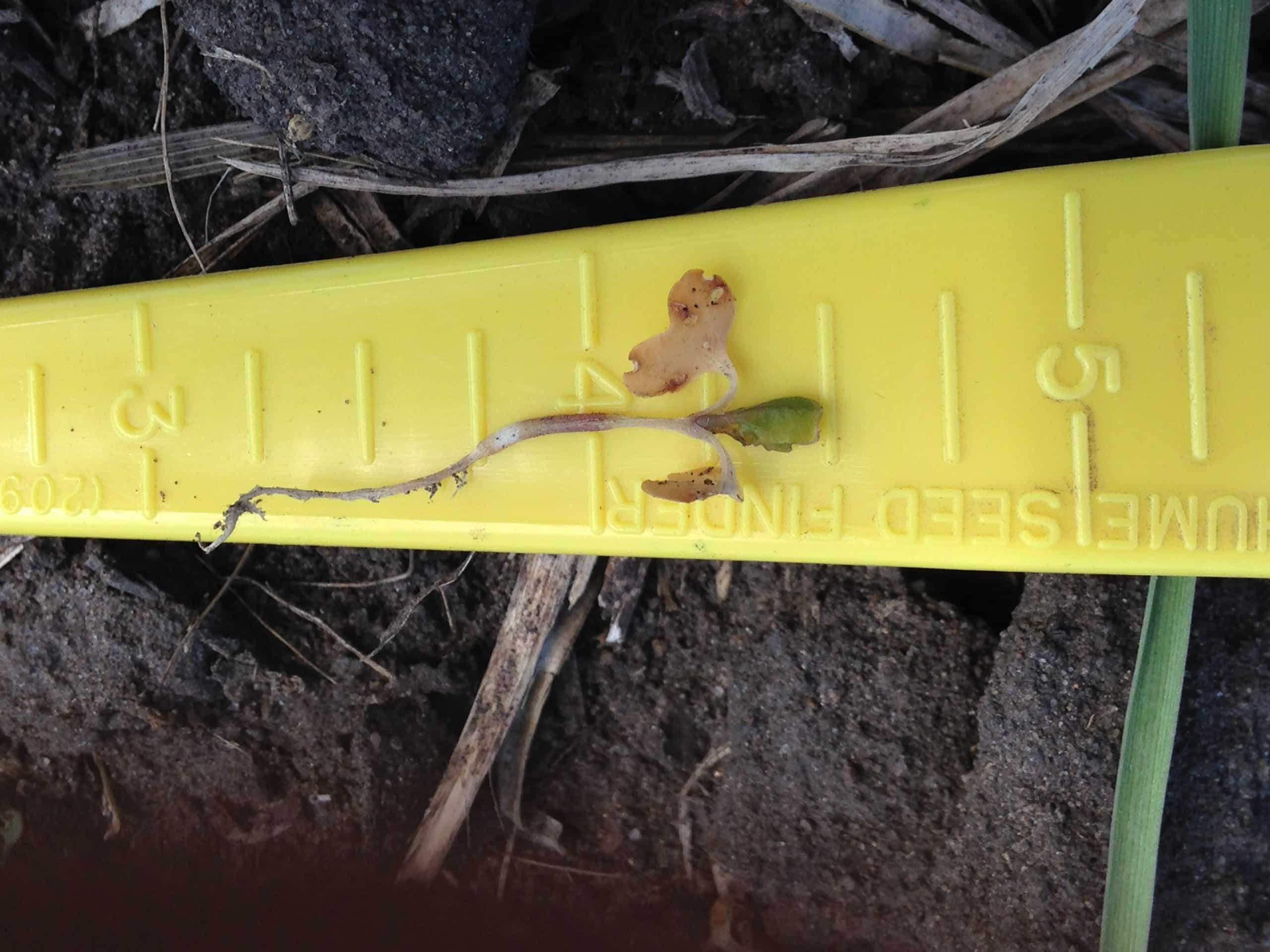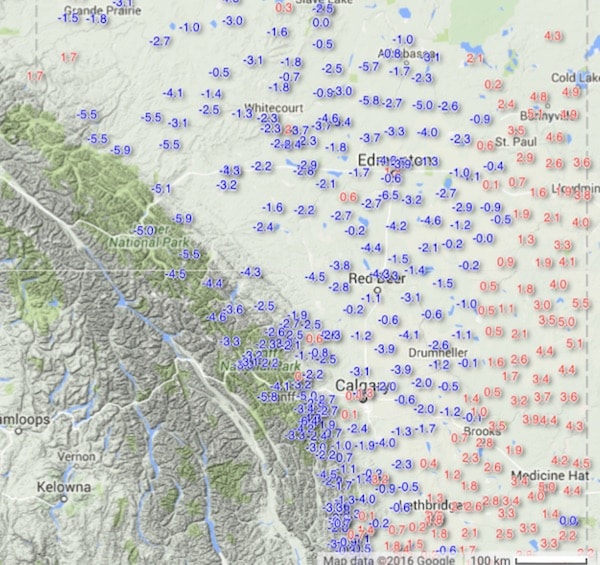After a frost, it can take a few days to accurately determine how many plants survived, and whether the stand is still uniform. Be patient before making any decisions. Check the whole crop the day after a frost and then again 3-4 days after a frost to assess the situation. Click here for tips on how to check the field.
Note that crop susceptibility to frost can depend on temperatures in the days leading up to the frost event. Canola that emerges in cooler conditions may be more tolerant of frost. These canola plants are acclimatized — or “hardened” — to cool conditions. Canola that establishes during hot days and warm nights and then experiences a sharp temperature drop to frost conditions is often more susceptible.
With a light frost of 0 C to -2 C, the risk of crop damage is minimal.
With a heavy frost that kills off the cotyledons, it will take a few days before new leaves will start emerging from the growing point between the cotyledons. If no growth occurs within this time, the plant is likely dead. Also, if the stem is pinched off or the plant flops over, the plant will likely die. The pinched off or broken stem cannot provide nutrients to the growing point. Important: Dead cotyledons do not mean a dead plant. If the hypocotyl is green and healthy days after the frost, this plant has likely survived and will soon put out a first leaf.
The quickest way to accurately assess recovery is to mark individual plants that could recover and recheck these plants over the following few days.
If many plants have been killed, the question is whether to reseed. Again, it takes a few days to determine the kill rate. If one or two plants per square foot have survived and if that stand is fairly consistent throughout the field, the best choice may be to leave it alone. A thin stand is not optimal for yield but a thin stand may have better yield and quality potential than a reseeded field, particularly in dry soil conditions that wouldn’t encourage rapid emergence.
If planning to wait for warmer weather before seeding, note that low temperatures forecast in the short term are not a factor for seed survival and emergence rates. The forecast for next week when seedlings are emerging is more relevant to seedling survival. By mid to late May, forecasts should be milder.
Note: Frost can be surprisingly variable, even within a small region. This map below, taken from Alberta Agriculture’s weather site, shows temperatures for May 10, 2016 at 6:00 a.m. for central and south Alberta. You’ll notice a -6.5°C just south of Edmonton and a clear north-south frost front to the east. To update each map daily, use the link above. Select “Weather Conditions Map” on the left, choose “low 24h temp” at the top then “Load/refresh data”.
Further reading:
Early weed control in cool or frost conditions
How to weather-proof canola: Frost



